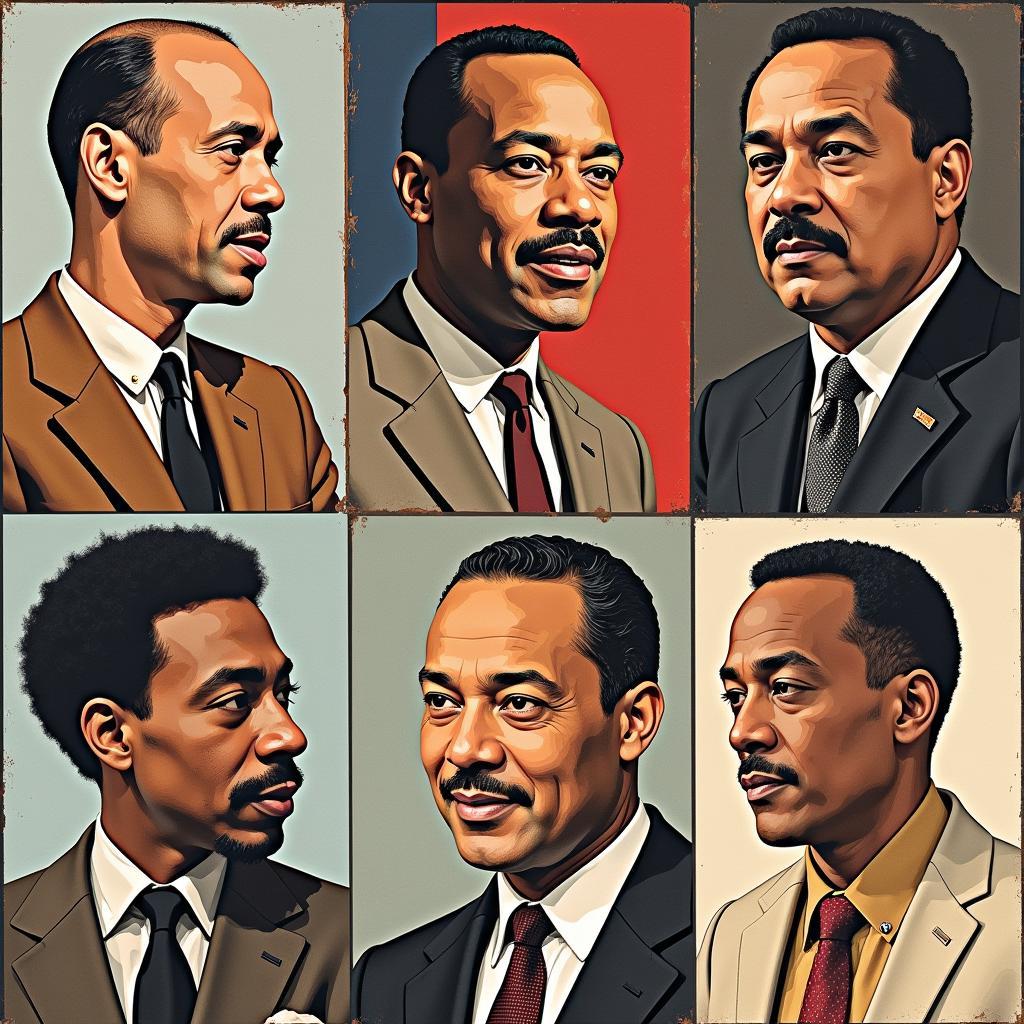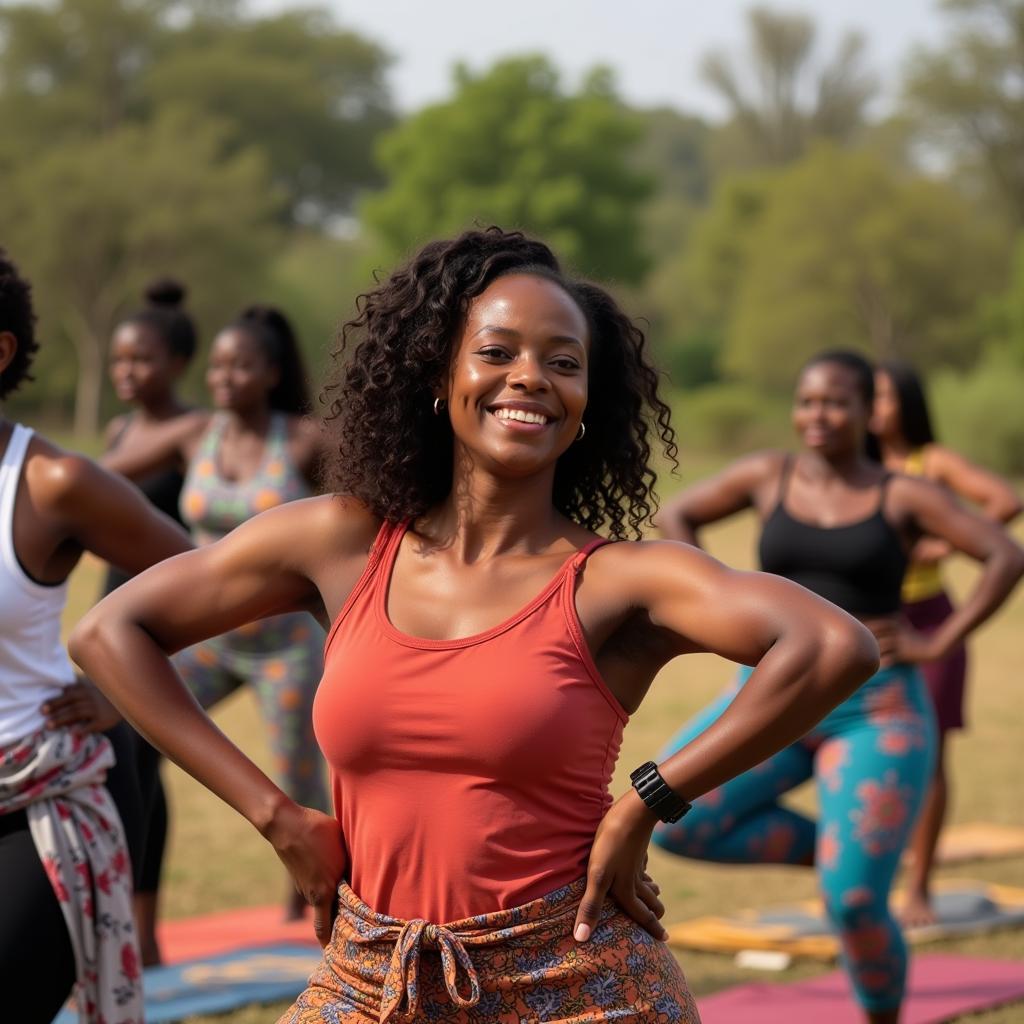African Dreadlocks Pictures: A Journey Through Culture and Style
African Dreadlocks Pictures showcase a rich tapestry of cultural expressions and individual styles. From ancient traditions to modern interpretations, dreadlocks in Africa hold deep meaning and significance, reflecting identity, spirituality, and social status. This exploration delves into the captivating world of African dreadlocks, examining their diverse forms, historical context, and contemporary relevance.
The History and Significance of African Dreadlocks
Dreadlocks in Africa have a history that stretches back millennia. Ancient Egyptians, Kushites, and other African civilizations wore dreadlocks as a symbol of spiritual power and social standing. Depictions of dreadlocks can be found in ancient Egyptian art and artifacts, demonstrating their long-standing presence in African culture. These hairstyles were not merely fashionable; they were imbued with deep cultural and spiritual meaning. For many, they represented a connection to the divine and an embrace of natural beauty.
This rich history continues to influence contemporary interpretations of dreadlocks across the African continent. Different ethnic groups and communities have developed unique styles and traditions associated with dreadlocking, adding to the diversity and beauty of this hairstyle.
Diverse Styles and Symbolism Across Africa
From the intricate patterns of the Himba people of Namibia to the free-flowing dreadlocks of the Maasai warriors of Kenya, African dreadlocks styles are as diverse as the continent itself. Each style tells a story, reflecting the unique traditions, beliefs, and artistic expressions of different communities. For some, dreadlocks represent a connection to their ancestors and a celebration of their heritage. For others, they are a statement of individuality and a form of self-expression.
Among the Yoruba people of Nigeria, for example, dreadlocks are often associated with spiritual devotion and are worn by priests and priestesses. The Rastafari movement, which originated in Jamaica, has also influenced the adoption of dreadlocks in many parts of Africa, further enriching the symbolism and meaning associated with this hairstyle. The complexities of these hairstyles often go unnoticed by those outside the culture.
African Dreadlocks Pictures: Capturing Beauty and Identity
African dreadlocks pictures serve as a powerful visual testament to the beauty and diversity of African culture. They capture the intricate details of different styles, showcasing the artistry and creativity involved in their creation and maintenance. Whether adorned with beads, shells, or other decorative elements, these hairstyles are often a source of pride and a reflection of personal identity. They can be a powerful way to express oneself and connect with one’s cultural roots.
These images also help to dispel misconceptions and stereotypes surrounding dreadlocks, highlighting their cultural significance and challenging negative perceptions. Through photographs and visual representations, the world can gain a deeper appreciation for the artistry, history, and cultural meaning embedded within African dreadlocks.
Maintaining and Caring for African Dreadlocks
Caring for dreadlocks requires patience, dedication, and an understanding of the specific hair type and styling techniques. Natural ingredients, such as aloe vera, shea butter, and coconut oil, are often used to moisturize and nourish the hair, promoting healthy growth and maintaining the integrity of the dreadlocks. Regular washing and proper drying techniques are essential to prevent buildup and maintain hygiene.
What are the different ways to style African dreadlocks?
African dreadlocks can be styled in countless ways, from intricate updos to free-flowing cascades. Braiding, twisting, and wrapping are common techniques used to create elaborate designs, often adorned with beads, shells, or other decorative elements. The versatility of dreadlocks allows for endless creative expression, reflecting individual preferences and cultural influences.
How do African dreadlocks reflect cultural identity?
African dreadlocks are often deeply intertwined with cultural identity, representing a connection to ancestral traditions, spiritual beliefs, and social status within specific communities. The unique styles and symbolism associated with dreadlocks vary across different ethnic groups and regions, showcasing the rich diversity of African cultures.
Conclusion: A Celebration of Culture and Style
African dreadlocks pictures offer a captivating glimpse into a world of cultural expression and individual style. From their ancient origins to their modern interpretations, dreadlocks in Africa continue to hold deep meaning and significance. They are a testament to the enduring power of tradition, the beauty of diversity, and the ongoing evolution of African culture. By appreciating the artistry and history behind these hairstyles, we can gain a deeper understanding of the rich cultural tapestry of the African continent.
FAQ
- What is the cultural significance of dreadlocks in Africa? Dreadlocks hold diverse meanings across different African cultures, often symbolizing spirituality, social status, or connection to ancestors.
- How are African dreadlocks styled? Various techniques like braiding, twisting, and wrapping are used, often incorporating beads and other adornments.
- What are the best ways to care for African dreadlocks? Natural ingredients like aloe vera and shea butter are commonly used to moisturize and maintain healthy dreadlocks.
- Where can I find more information about African hair care traditions? You can explore more about african american subculture.
- Are there any misconceptions about African dreadlocks? Yes, some mistakenly associate dreadlocks with neglect, overlooking their rich cultural significance and intricate care routines.
For further reading, explore other articles on our website related to African hair care, traditions, and cultural practices.
When you need support, please contact us by Phone: +255768904061, Email: [email protected] or visit us at: Mbarali DC Mawindi, Kangaga, Tanzania. We have a 24/7 customer service team.


